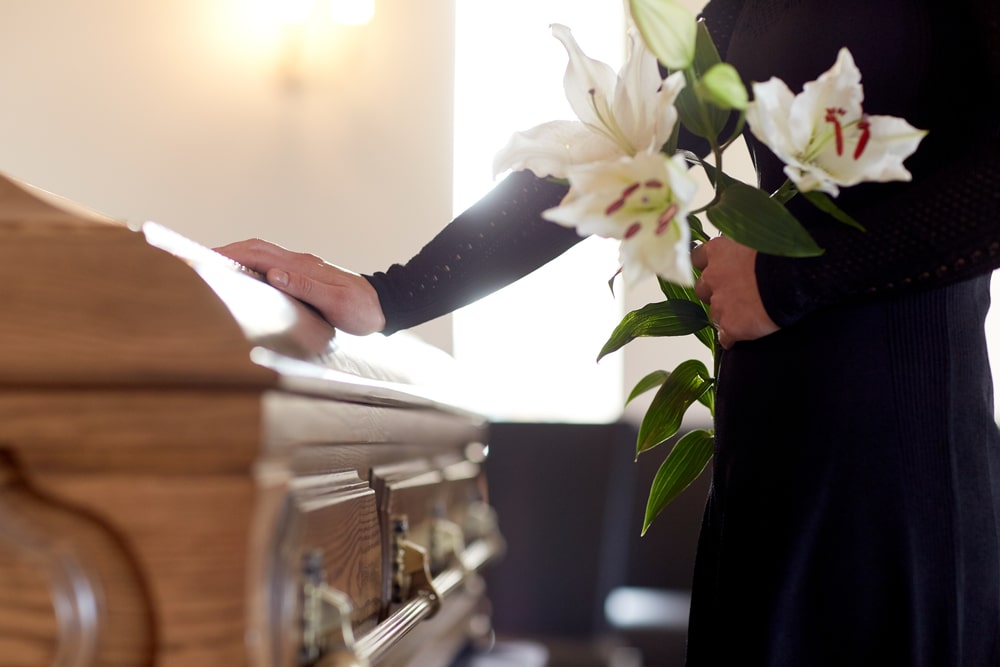“People who take the time and make the effort to create meaningful funeral arrangements when someone loved dies often end up making new arrangements in their own lives. They remember and reconnect with what is most meaningful to them in life…strengthen bonds with family members and friends. They emerge changed, more authentic and purposeful. The best funerals remind us how we should live.” – Dr. Alan Wolfelt
With a loved one in hospice care, it’s hard to face the fact that, sometime soon, your family will need to plan a final tribute for someone you love. Even though you wish things were different, wouldn’t it be good to create a service that truly reflects your loved one’s life and legacy?

Over his years of counseling families, Dr. Alan Wolfelt, a nationally renowned grief counselor and educator, has found that there are several tried and true elements you should consider incorporating in a final tribute. Dr. Wolfelt tells us that these elements are necessary to facilitate the six needs that a funeral fulfills: 1) acknowledging the reality of the death, 2) embracing the pain of the loss, 3) remembering the person who died, 4) developing a new self-identity, 5) searching for meaning, and 6) receiving ongoing support from others.
As you create a personalized and meaningful tribute, give thoughtful consideration to how you can implement these healing and meaningful elements.
Music
First of all, music sets the tone of a funeral and brings emotions to the forefront. In fact, one of the purposes of a funeral is to allow mourners to grieve together, and in many ways, music says what words cannot. Don’t be afraid to invite people to express grief. Consider using music that was significant to your loved one.
Why Include Special Music in a Funeral Ceremony?
Top 10 Hymns for a Funeral Ceremony
Top 10 Songs for a Funeral Ceremony
Readings
Second, readings add another facet to a meaningful service. They are another way to not only invite mourners to express their emotions, but readings bring the unique spirit of the one who has died to life. Did they have a favorite book? Poem? Were they a person of faith who would want passages read?
How do Readings Enhance the Funeral Experience?
Top 10 Poems for a Funeral Ceremony
Viewing/Visitation/Reception
Third, the viewing or visitation is a time for family, friends, coworkers and neighbors to gather and express support and sympathy. If it is decided to have a viewing, it is an opportunity for mourners to see this special person one last time and begin to acknowledge the reality of their death. For many, as part of the grieving process, it is important to physically see the body. The viewing offers this opportunity.
Why Should the Body Be Present?
Eulogy/Remembrance
Fourth, the eulogy may be the single most important aspect of a funeral service. It is the time to acknowledge and affirm the significance of the life lived. With that in mind, take time to share treasured memories, quotes, or even the lost loved one’s favorite jokes. The eulogy (or remembrance/homily) can be delivered by a clergy person, family member, or even by a series of people.
Symbols
Fifth, symbols, or symbolic acts, offer a focus point for the bereaved as well as a sense of comfort. Common symbols are a cross (or another appropriate religious symbol), flowers, and candles. For example, the act of lighting a candle, planting a memorial tree, and wearing dark clothing are all symbols we utilize.
Gathering
Sixth, the gathering is an opportunity for friends and family to come together after the funeral service to share stories and to support each other. While you consider the benefits of a gathering, take a few moments to read the article below.
Actions
And finally, by inviting others into action at the funeral service, you engage mourners and invite them to put their grief into motion. Simply put, mourning is the outward expression of our inward grief. To move others toward healing, it is important to invite them to act.
Using these elements as a guide will help you create a sweet, meaningful, and healing experience. Those who come to mourn will leave feeling like they have honored a life lived and have taken the first healthy step on their grief journey.







